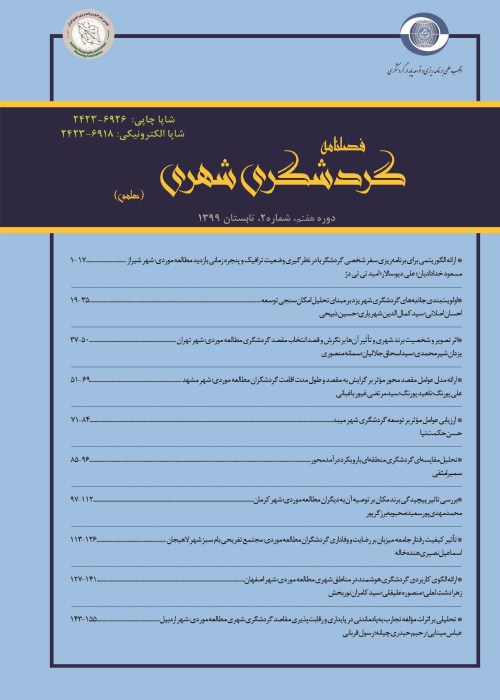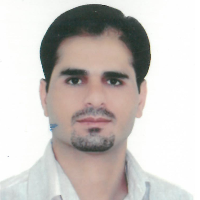Estimating the Demand of Foreign Medical Tourism Four Zones of Land Use Planning with Medical Advantage
Author(s):
Article Type:
Research/Original Article (دارای رتبه معتبر)
Abstract:
Extended Abstract
Introduction
Among different areas of tourism, health tourism has received a lot of attention due to creating threefold currency compared to other types of tourism, capabilities and competitive advantages. Advances and medical achievements and the high level of health care equipment in Iran have created new possibilities and opportunities for the field of medical tourism. Iran due to its specialized doctors, low treatment costs, natural resources and suitable climate, proximity to Arab countries and similarity of culture and dialect with some neighboring countries have advantages in the field of attracting medical tourists from these countries despite the obstacles and weaknesses such as the presence of competitors in the region. Iran's share of the health tourism market is small despite its high capacity for medicine and healthcare. Therefore, Iran, as one of the regions and centers of medical tourism in the world, has potential therapeutic and medical capacities.Methodology
The research area includes four tourism zones with comparative medical advantage, according to the report of land use planning (2018). These 4 zones of land use planning include zone 2 (West Azerbaijan, East Azerbaijan, Ardabil and Kurdistan), zone 4 (Isfahan, Chaharmahal and Bakhtiari and Khuzestan), zone 6 (Tehran, Qom and Alborz), and zone 9 (South, North and Razavi Khorasan). Medical tourism demand was estimated by the Almost Ideal Demand. According to the studies of Walsh (1996), Uysal and Crampton (1984) due to insufficient access to data, problems related to compound alignment, etc., the factors affecting the tourist were selected separately for medical tourism demand in areas with medical system. Based on the Almost Ideal Demand, ten effective factors on the demand of medical tourism in zones with a medical system, including services and visa duration, relative prices (exchange rates), disposable personal income, entry and exit regulations and facilities, political and communication conditions with Iran, cost of accommodation, cost of treatment, waiting time for service, physician reputation and specialization were estimated. A random sample of 183 foreign tourists was selected by referring to the relevant customs.Results and discussion
According to the opinion of 183 foreign medical tourists in four zones od land use planning, the sensitivity of medical tourism demand to effective factors and types of medical tourism expenditures is measured. The results in all four medical tourism zones indicate the sensitivity of foreign tourists to various macro factors such as inflation and exchange rates. In addition, the variables of service and duration of visa, rules and facilities of entry and exit, political and communication conditions with Iran, cost of accommodation, cost of treatment, waiting time for service and the reputation of the doctor and special expertise all affect the tourist demand. Also, foreign tourists are highly sensitive to the costs and expenses of treatment in Iran and less sensitive to other costs such as accommodation and other expenses. All variables are at a stable level, so the level values of the variables were used to estimate the model in different regions, and out of 42 estimated parameters, 23 parameters were significant at the 95% confidence level. And since, according to Durbin-Watson statistics and the White test, all relationships have no autocorrelation and variance inequality, so the results are reliable. Therefore, the statistically significant coefficients indicate the sensitivity of tourists' demand to the corresponding variables of significant coefficients such as price, expenditure, exchange rate, inflation and so on. In other words, the significance of price coefficients for medical goods and services implies that the government can use these variables as a tool to achieve its economic goals in order to strengthen medical tourism.Conclusion
Based on the results of estimating the almost ideal demand model for medical health tourism and considering the positive sign of the variable coefficient of tourists' opinions about the exchange rate and its significance in relation to the demand for medical services, it can be seen that an increase in the exchange rate leads to an increase the demand for medical services. Achieving this result based on trade theories such as Heckcher-Ohlin theory and the law of gravity is not far from expectation, and in fact this has led to cheaper Iranian domestic goods for foreigners, which is a tourist pull factor under the law of gravity. Based on the results of estimating the almost ideal medical tourism demand model and considering the negative sign of the variable coefficient of tourists' opinions about the waiting time for receiving services and its significance in relation to medical demand, it can be seen that increasing the growth of the health sector and service facilities, faster leads to an increase in demand for medical services. According to the results in all zones of land use planning, medical tourism demand is sensitive to service quality and visa duration, entry and exit regulations and facilities, political and communication conditions with Iran, cost of accommodation, cost of treatment, waiting time to receive services and doctor reputation and specialty. This means that foreign medical tourists who come to Iran are sensitive to the cost and quality of services in terms of income level and demand. In other words, the estimate indicates that the actual demand for medical services for foreigners is a necessary and non-luxury demand and therefore, increasing costs or reducing the quality of services will lead to a sharp decline in this demand.Keywords:
Language:
Persian
Published:
journal of urban tourism, Volume:8 Issue: 3, 2021
Pages:
91 to 105
magiran.com/p2381901
دانلود و مطالعه متن این مقاله با یکی از روشهای زیر امکان پذیر است:
اشتراک شخصی
با عضویت و پرداخت آنلاین حق اشتراک یکساله به مبلغ 1,390,000ريال میتوانید 70 عنوان مطلب دانلود کنید!
اشتراک سازمانی
به کتابخانه دانشگاه یا محل کار خود پیشنهاد کنید تا اشتراک سازمانی این پایگاه را برای دسترسی نامحدود همه کاربران به متن مطالب تهیه نمایند!
توجه!
- حق عضویت دریافتی صرف حمایت از نشریات عضو و نگهداری، تکمیل و توسعه مگیران میشود.
- پرداخت حق اشتراک و دانلود مقالات اجازه بازنشر آن در سایر رسانههای چاپی و دیجیتال را به کاربر نمیدهد.
In order to view content subscription is required
Personal subscription
Subscribe magiran.com for 70 € euros via PayPal and download 70 articles during a year.
Organization subscription
Please contact us to subscribe your university or library for unlimited access!



